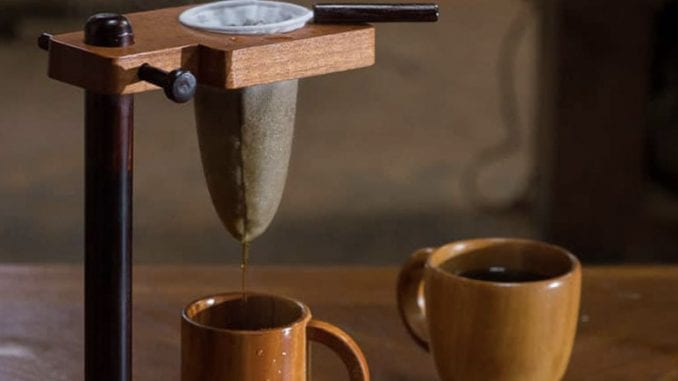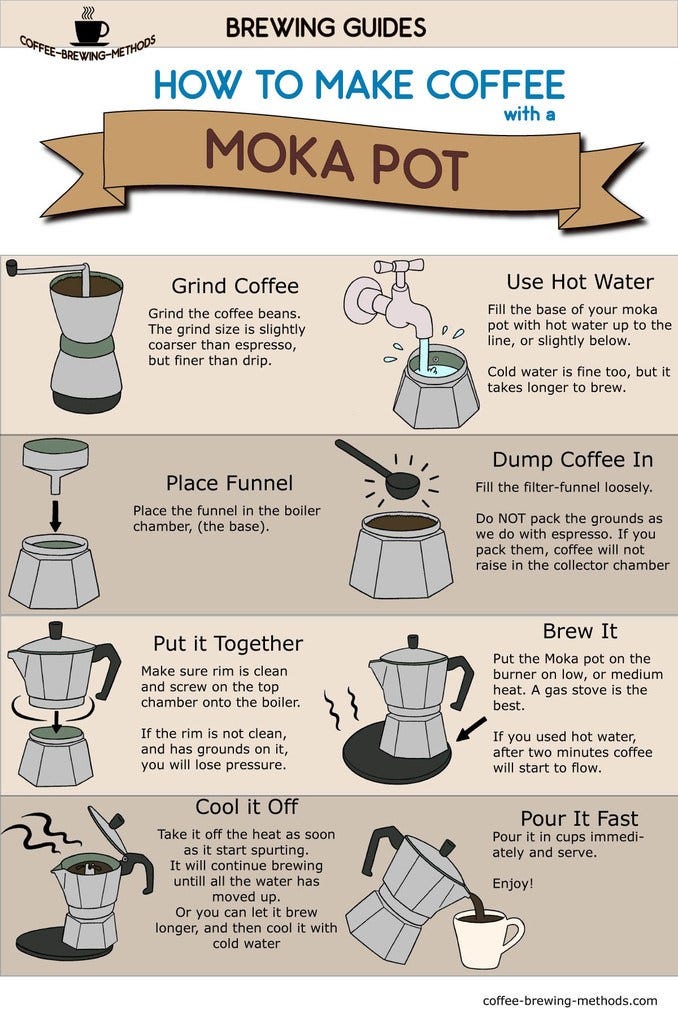Revealing the Science Behind Various Coffee Brewing Methods and Their Advantages
Revealing the Science Behind Various Coffee Brewing Methods and Their Advantages
Blog Article
The Scientific Research Behind Coffee Developing: Exactly How Temperature Level and Time Affect Your Beverage
Understanding the science behind coffee developing discloses that temperature level and time are not plain variables but pivotal elements that determine the drink's flavor profile and overall quality. The optimal developing temperature level generally falls between 195 ° F and 205 ° F, while the duration of removal differs substantially across different methods. This interplay of variables can cause a mug that is either frustrating or delightful. As we explore the subtleties of these aspects, the question occurs: how can one effectively equilibrium temperature and time to achieve that perfect mixture?
The Chemistry of Coffee Extraction
The chemistry of coffee removal explores the intricate processes that change raw coffee beans into the fragrant beverage appreciated worldwide. This improvement mainly entails the solubility of numerous compounds existing in the beans, which are affected by elements such as work dimension, water high quality, and the brewing technique used.
During the developing process, warm water acts as a solvent, drawing out soluble substances, consisting of high levels of caffeine, lipids, sugars, and acids, from the coffee premises. Each substance contributes to the flavor profile, fragrance, and body of the final beverage. Acids are liable for tasty and intense notes, while oils add to a rich mouthfeel.
The extraction procedure is not uniform; different compounds liquify at various prices. The first phases of brewing extract acids and sugars, causing a positive level of acidity, while extended removal can lead to bitterness because of over-extraction of unfavorable substances. Comprehending these chemical communications is crucial for optimizing brewing techniques, as the balance between removal time and water temperature level can significantly influence the overall quality of the coffee. Ultimately, grasping the chemistry of coffee extraction is essential to accomplishing a all-round and flavorful mug.
Perfect Brewing Temperatures
Finding the right developing temperature is vital for opening the complete capacity of coffee flavors and fragrances - coffee brewing methods. Research study suggests that the ideal array for developing coffee lies in between 195 ° F to 205 ° F(90 ° C to 96 ° C) Within this variety, the extraction procedure successfully dissolves the preferable soluble compounds in coffee beans, leading to a well balanced and savory cup
Developing at lower temperatures, such as listed below 195 ° F(90 ° C ), may cause under-extraction, producing a weak and acidic mixture with soft flavors. Alternatively, brewing at temperature levels surpassing 205 ° F(96 ° C) can lead to over-extraction, creating a severe and bitter preference due to the too much dissolution of undesirable substances, such as tannins.
In addition, the suitable brewing temperature level can vary depending upon the coffee bean kind and roast level. Lighter roasts often benefit from somewhat higher temperature levels to enhance their complicated taste accounts, while darker roasts may be much better suited to lower temperatures to minimize bitterness.
Ultimately, maintaining precision in brewing temperatures is vital for attaining an unified balance of flavors, guaranteeing that every cup of coffee delivers a rewarding sensory experience.
Impact of Developing Time
Brewing time plays a pivotal duty in figuring out the taste profile and overall quality of coffee. Much shorter brewing times can result in under-extraction, leading to a sour or weak taste, as not adequate soluble substances are dissolved.
Optimum developing time varies relying on the approach utilized and the grind dimension useful reference of the coffee. A French press generally requires concerning four mins, while espresso removal is generally completed within 25 to 30 secs. It is necessary to calibrate developing time in conjunction with various other variables, such as water temperature and coffee-to-water proportion, to accomplish the desired flavor account.
Comprehending the impact of developing time allows coffee fanatics to refine their developing techniques, inevitably improving the sensory experience of their cup (coffee brewing methods). With cautious focus to this variable, one can unlock the complete possibility of the coffee, exposing its one-of-a-kind features and subtleties
Developing Techniques and Their Results

For instance, techniques like French press and cool brew enable for a much longer steeping time, causing a fuller body and durable taste as a result of increased extraction of oils and soluble solids. On the other hand, coffee developing uses high stress and a much shorter removal time, generating a focused shot that stresses extreme tastes and an abundant crema.
Pour-over strategies, such as Chemex or V60, use an even more regulated removal procedure, enabling the maker to adjust circulation price and water distribution, which can improve brightness and clarity. Meanwhile, percolation approaches cycle water through the coffee grounds multiple times, resulting in a stronger, typically bitter flavor.
Last but not least, using paper filters versus steel filters can additionally affect the final taste; paper filters typically produce a cleaner mug by capturing oils and great particles, while metal filters permit even more oils to go through, adding to a fuller mouthfeel - coffee brewing methods. Understanding these nuances can boost the coffee experience substantially
Tips for Refining Your Brew
A well-executed brew can change even the most basic coffee into an amazing experience. Grind the beans just before brewing to optimize quality, making sure the grind dimension matches your brewing approach-- coarser for French press and finer for coffee.
Water quality plays a crucial role; usage filtered water devoid of pollutants. The excellent brewing temperature level ranges between 195 ° F and 205 ° F(90 ° C to 96 ° C ) Also hot can swelter the coffee, while also amazing may under-extract tastes.
Timing is equally essential. For immersion approaches, steeping for three to 5 minutes is ideal, whereas drip approaches usually take about 5 mins. Try out brew times to locate your favored stamina.

Final Thought
In summary, the intricate partnership in between temperature and time is vital in the coffee brewing process. Recognizing these scientific principles encourages individuals to fine-tune their brewing techniques, inevitably leading to a much more enjoyable and well balanced coffee experience.
Understanding the scientific research behind coffee developing reveals that temperature level and time are not mere variables yet essential elements that determine the drink's flavor account and overall top quality. Understanding these chemical communications is important for enhancing brewing techniques, as the equilibrium between removal time and water temperature can substantially affect the overall top quality of the coffee.Brewing time plays an essential role in figuring out the flavor profile and total high quality of coffee. By focusing on these elements-- bean top quality, grind size, water temperature, soaking time, and ratio-- you can elevate your coffee developing procedure, resulting in a regularly premium cup.
In recap, the complex relationship between temperature level and time is paramount in the coffee brewing procedure.
Report this page